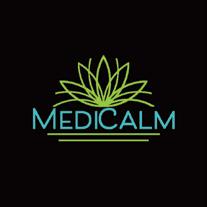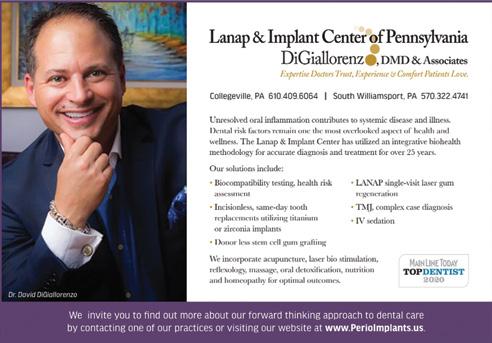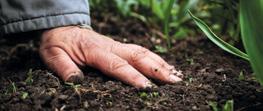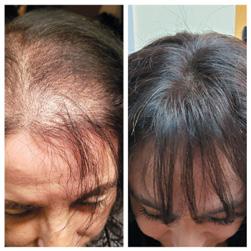Minimizing Toxic Exposure
Lower Your Foodprint
The Earth as Muse

Minimizing Toxic Exposure
Lower Your Foodprint
The Earth as Muse

Join
Check out and post “What’s New”. Be Inspired, find opportunities, upcoming events & more
& join 200+ RWH Topic Communities. Power Search centralized local & global knowledge & resources

Your way from thought leaders and experts (curated articles, online webcasts, courses, live events

With your best matched, screened providers and organizations, plus like-minded members
With top doctors & experts in live video Q&A. Plus get members-only discounts on their programs
Access to a vast growing catalog of courses. Plus, curate your own library to track your progress
On top provider and expert services, healing programs, training, courses & products
Top In-Hub thought leaders and missionaligned partner communities with exclusive benefits
Dr. Justin Ponquinette, DMD and board certified, practices the full scope of oral and maxillofacial surgery including full mouth rehabilitation. We can also diagnose and treat facial pain, facial injuries, TMJ disorders, remove wisdom teeth, and perform a full range of dental implant and bone grafting procedures. Our staff is trained in assisting with I.V. sedation within our state of the art office setting.
At Atlantic Oral Surgery Center, we embrace homeopathy, laser/light therapy, ozone therapy, supplementation and more to provide a higher caliber of care to our patients.

• Autogenous Blood Products (PRF)
• Ceramic (Metal-Free) Implants
• Homeopathy
• Laser/Light Therapy
• Ozone (O3 Super-Charged Oxygen)
“Dr. Ponquinette and his team are exceptional. ... Not only is Dr. P a talented surgeon but he offers advanced technology that no one else has (ie- cold laser, PRF, and ozone.) ... Since my surgery, I’ve finally been able to regain my health. It’s amazing how quickly the body can bounce back once an infection is finally removed.”
— Molly G.We offer methods to promote/ provide oral health while respecting and embracing the body’s ability to heal itself.
Natural Awakenings is a network of natural lifestyle magazine publishers empowering local communities with knowledge, resources and connections to lead healthier lives
14 A NEW DAWN ON THE FARM FRONT
Stepping Away From Industrialized Agriculture


16 JEFF MOYER on Farming for Human and Planetary Health
19 THE EARTH AS MUSE Inspiration Meets Conservation

20 TOXIC OVERLOAD
How to Clean Our Water, Food and Indoor Air

22 SUSTAINABLE EATING Tips to Shrink Your Foodprint
24 KID-APPROVED AUTISM DIETS

Strategies to Optimize Nutrition and Acceptance
16
To advertise with Natural Awakenings or request a media kit, please contact us at 267-544-9585 or email Publisher@NABuxMont.com. Deadline for ads: the 5th of the month.
Email articles, news items and ideas to: Publisher@NABuxMont.com Deadline for editorial: the 5th of the month.
Submit calendar events online at NABuxMont.com Deadline for calendar: the 5th of the month.
Advertise your products or services in multiple markets! Natural Awakenings Publishing Corp. is a growing franchised family of locally owned magazines serving communities since 1994. To place your ad in other markets call 239-206-2000. For franchising opportunities call 239-206-2000 or email Natural Awakenings@KnoWEwell.com.
19
Publisher Joe Dunne
Publisher@NABuxMont.com • 908-405-1515
Managing Editor Kathy Tarbell Kathy@NaturalAwakeningsNJ.com

Contributing Writer Kiki Powers
Layout Design Melanie Rankin
Sales & Marketing Joe Dunne
Joe Dunne, PublisherAppreciation is one of those super small acts of kindness that costs absolutely nothing but pays monstrous dividends in remembered feel-good moments. Of course, to get the most out of this act of spiritual kindness, being real is a must. When authentically felt and expressed, even casual bystanders smile and get in on the moment. It also triggers the body to pump out endorphins, the “feel-good” brain chemical, which is so cool. What I love best though about these random moments of appreciation are the flashback memories that create additional feel-good moments. As I mentioned, dividends.
Peter, a friend of mine, would always acknowledge people. He would walk across the street to tell a crossing guard what a great attitude she has. He would go out of his way and pay a compliment to anyone doing a good job, who had great energy, etc. He was always looking for the good and for someone to make happy. He knew that paying attention to the good works. Peter, as you can guess, was aware that he also benefited—it touched his soul. He was like the Johnny Appleseed of compliments. I was always amazed at how, with a simple word or gesture, he could bring about a smile—the visual snapshot of internal joy that appears when someone feels appreciated.
I remember distinctly the time Peter knocked on a Macy’s store display window being prepped for Christmas. He surprised a lady that looked stressed in her work with a little tap dance and thumbs up motion to let her know she was appreciated for her creation. Sure enough, this little sincere act produced a pause, quickly followed by a very broad smile that filled the window, or so it seemed, complete with an “Oh, wow!” and a heartfelt thank you.
In the world of everyday life, it touches our hearts to know someone cares, that people see us, that what we do matters.
I write about this as a reminder to never forget to tell people, and show people, especially the people that I share love with and that support me, how much I appreciate them.
I remember always wanting one of my parents to tell me how proud they were of me. It never happened. They are now gone, and that is okay. But the memory serves as a lesson to chart a different path and always acknowledge the good. So, to my daughter who lives far away, and to my son who lives even farther—I always want them to know how proud I am of them, their work, their parenting, the people they are, and just how much I appreciate them. Also, to everyone around me in my world, I need to make sure they feel appreciated, even if it’s just from me.
Today is always the right time to go out and look for the good, to make a bunch of feel-good moments for others and yourself. So go forth and help those you meet go from underappreciated to appreciated. Savor these moments. And let me know what happens.
In peace, love and laughter,
Digital Marketing Kristy Mayer Accounting/Billing Asta Dunne Asta@NaturalAwakeningsNJ.com
CONTACT THE PUBLISHER
Joe Dunne
Cell: 908-405-1515 • Fax: 239-920-5147
Publisher@NABuxMont.com NABuxMont.com
Visit our Facebook page for the latest health updates and information, or to post your events and comments.
CEO Kimberly B. Whittle
National Editor Sandra Yeyati
Editor Brooke Goode
Copy Editor/Proofreader Melanie Rankin
Design & Production Gabrielle W-Perillo
National Advertising Lisa Doyle-Mitchell
Natural Awakenings Publishing Corporation 350 Main Street, Suite 9B Bedminster, NJ 07921
Ph: 239-206-2000
NaturalAwakenings@KnoWEwell.com
© 2023 by Natural Awakenings. All rights reserved. Although some parts of this publication may be reproduced and reprinted, we require that prior permission be obtained in writing.
Natural Awakenings is a free publication distributed locally and is supported by our advertisers. Please call to find a location near you or if you would like copies placed at your business.
We do not necessarily endorse the views expressed in the articles and advertisements, nor are we responsible for the products and services advertised. The content herein has not been evaluated by the Food and Drug Administration and is not meant to treat, diagnose, cure or prevent any condition. Statements are the opinion of the author/speaker. Check with a healthcare professional regarding the appropriate use of any treatment.
Natural Awakenings Magazine is ranked 5th Nationally in CISION’S® 2016
Natural Awakenings is printed on recyclable newsprint for the environment.

This May, join Natural Awakenings and KnoWEwell for a women’s wellness event entitled Overcoming Stress: How to Balance It All. Each Tuesday at 5 p.m. PDT/ 8 p.m. EDT, top integrative and functional medicine experts in women’s health will present cutting-edge insights into the many ways that stress can impact hormones, thyroid function, fertility and libido, and also provide tangible recommendations to improve skin care, aging, sleep and mindset. The speakers are:

n Anna Cabeca, board-certified obstetrician and gynecologist, author of The Hormone Fix
n Trevor Cates, naturopathic doctor, author of Clean Skin From Within
n Anne Marie Fine, naturopathic doctor, author of Cracking the Beauty Code


n Carrie Jones, functional medicine physician specializing in hormone and thyroid health




n Jaquel Patterson, naturopathic physician, success coach, author of Women and Lyme




n Carol A. Penn, board-certified physician, mindset coach, author of Meditation in a Time of Madness
n Arti Chandra, double board-certified physician specializing in integrative and functional medicine and public health

n Jaclyn Smeaton, naturopathic doctor specializing in hormone health and reproductive medicine

n Kela Smith, holistic-integrative fertility and hormone doctor
n Jyl Steinbeck, personal trainer and lifestyle expert
The $59 event fee includes all Tuesday evening sessions. To learn more and register, visit Tinyurl.com/WIW2023N or scan the QR Code. See ad, page 18
Linda Lemire and Heart Flowers Healing Therapies wish to highlight Manual Lymph Massage (MLD), one of the healing therapies offered at the farm just north of Doylestown. Lymphatic diseases, especially lymphedema, represent a serious problem in the health community. MLD is a light, skin-stretching technique, developed in 1936 by Dr. Emil and Estrid Vodder, that treats swollen lymph nodes by helping promote the movement of lymphatic fluid out of the swollen area.
“During the hour-long session, I first focus attention on the deep lymph nodes to open them to receiving the excess lymphatic fluid and proteins. Then I apply a brushing technique to the limbs to encourage the movement of lymph toward the trunk of the body and solar plexus and ultimately the heart,” shares Lemire. “Deep breathing techniques are usually done at the beginning and end of the session to calm the body and assist it in accepting the movement of the lymph. It is very relaxing.”
This calming therapy not only benefits those with problems with edema, MLD also supports the maintenance needs of the body that ensure good health. The best time to give the body what it needs to function at its best is always now.


Cost: $100 per hour session. Business hours are flexible. Location: 713 Kellers Church Road, Ottsville, (Bedminster Township). For more information, please call 215-534-6138 or email llemire@comcast.net. See directory listing, page 30.

Note: Our apologies for placing the incorrect picture in the news brief we published in our March 2023 issue. This brief is a repeat with the correct picture.


“In
 – Dr. Griffin
– Dr. Griffin



A new study published in Molecular Psychiatry has shown that eating more fermented foods and fiber daily for just four weeks significantly lowered perceived stress levels. Forty-five participants with relatively low-fiber diets were split into two groups.

One group met with a dietitian that recommended a psychobiotic diet, which included six to eight daily servings of fruits and vegetables high in prebiotic fibers, such as onions, leeks, cabbage, apples, bananas and oats; five to eight daily servings of grains; three to four servings of legumes per week; and two to three daily servings of fermented foods like sauerkraut, kefir and kombucha. The control group received only general dietary advice based on the healthy eating food pyramid.
The group following the psychobiotic diet reported feeling less stressed compared with those in the control group. Moreover, significant changes in the level of certain key chemicals produced by gut microbes were found in these participants. Some of these chemicals have been linked to improved mental health, which could explain why the participants reported feeling less stressed. The quality of sleep improved in both groups, but those on the psychobiotic diet reported greater sleep improvements.
After a systematic review of 39 studies to evaluate the benefits and harms of screening for anxiety disorders in children and adolescents aged 8 to 18, the U.S. Preventive Services Task Force (USPSTF), a group of disease prevention and medical experts assembled by the U.S. Department of Health and Human Services, now recommends that primary care physicians perform such screenings, even if there are no signs or symptoms of anxiety.
A common mental health condition in the U.S., anxiety disorder involves excessive fear or worry that manifests as emotional and physical symptoms. In children and adolescents, it is associated with impaired functioning, educational underachievement and an increased likelihood of a future anxiety disorder or depression. The 2018-2019 National Survey of Children’s Health found that 7.8 percent of children and adolescents aged 3 to 17 had a current anxiety disorder.
USPSTF recommended using screening questionnaires to identify children at risk, noting that studies show that children with anxiety benefit from treatments that may include cognitive behavioral therapy or psychotherapy. They also concluded that there is insufficient evidence to assess children 7 years old or younger.

Researchers in the UK compared the effect that different types of daily movement had on overall cognition, memory and executive function. Their study, published in the Journal of Epidemiology and Community Health, reported that replacing sitting, sleeping or gentle movement with less than 10 minutes of moderate to vigorous activity (brisk walking, bicycling, running up and down stairs, aerobic dancing, jogging, running or swimming) can protect the brain and improve working memory and executive processes like planning and organization. The intensity of the exercise matters, and study participants that engaged in light physical activity, rather than more vigorous activity, saw declines in cognitive performance. However, light activity is still more beneficial than sitting, the scientists found.
The data for these findings was taken from the 1970 British Cohort Study, an ongoing survey that tracks the health of a group of UK-born adults. The group of nearly 4,500 participants consented, at age 46, to wear an activity tracker and complete verbal memory and executive functioning tests, and they were followed from 2016 to 2018.


Rapid ocean warming and other effects caused by climate change have stressed and degraded corals around the globe, and scientists have been studying ways to rebuild, manage and conserve these vital ecosystems. A new Australian study published in Journal of Applied Ecology tested whether playing certain sounds underwater at reef restoration sites could boost the recruitment of oysters and enhance their habitat-building activities. Australia’s flat oyster is a key reef-building organism targeted for restoration efforts.
Previous studies had shown that the sound of healthy reefs differs from that of damaged reefs. Using inexpensive marine speakers, the researchers reproduced the sound of a healthy reef at four sites across two of the largest oyster reef restorations in Australia and compared the results to areas that did not receive this soundscape enrichment. The sonically enhanced areas resulted in the presence of more and larger oysters that formed more three-dimensional habitats atop the reef restorations. The scientists propose that the use of marine soundscapes during early stages of new reef restoration projects could reduce the cost of habitat recovery.
Two London-based roboticists, Mirko Kovac and Robert StuartSmith, have developed new technology that mimics the way bees work together to build a structure. They used two free-flying drones to build a human-sized tower. The “build drone” carried expanding foam and sprayed it in slow, steady circles to form layers, while the “scan drone” surveyed the structure and identified spots where the last layer was either too thin or too thick, and it then created a plan for the build drone to even things out on the next pass to keep the structure straight and sturdy.
In a second demonstration of the technology, the drones made a cylinder the size of a large round cake using a cement-like material. The duo exhibited a great deal of precision in stacking the material to within millimeters.
The team plans to take the drones outdoors to deal with the elements and add to the complexity of the objectives and number of drones involved. If the technology can be perfected, these collaborative construction drones could be used in places where it is difficult for humans and heavy machinery to reach, like the tops of buildings, remote pipelines and disaster areas.

A Swedish battery manufacturer, Northvolt, in partnership with Stora Enso, one of the largest private forest owners in the world, has developed a battery for electric vehicles (EV) with an anode made of sustainably raised and harvested wood instead of graphite, paving the way for battery production from a renewable source.
The partners figured out a way to extract lignin, a carbon-rich natural binder that comprises up to 30 percent of many trees, and turn it into a material they call Lignode. According to Stora Enso, by replacing graphite or copper anodes with Lignode, lithium-ion batteries will offer faster charging and discharging, higher cycling stability and more efficient performance in low temperature.
More than 50 percent of the EV’s carbon footprint comes from the manufacture of its battery—both in sourcing raw materials and producing the component. Mining graphite is an expensive and labor-intensive process that requires considerable resources that come from parts of the world where workers’ rights are inadequately protected. While Northvolt’s battery is not on the market yet, this development, along with others like solid-state batteries, may help to reduce the carbon footprint of EVs.

Unresolved oral inflammation contributes to systemic disease and illness. Dental risk factors remain one of the most overlooked aspects of health and wellness. The Lanap & Implant Center has utilized an integrative biohealth methodology for accurate diagnosis and treatment for over 25 years.
Our solutions include:
• Biocompatibility testing, health risk assessment
• Incisionless, same-day tooth replacements utilizing titanium or zirconia implants

• Donor less stem cell gum grafting
• LANAP single-visit laser gum regeneration
• TMJ, complex case diagnosis
• IV sedation
We incorporate acupuncture, laser bio stimulation, reflexology, massage, oral detoxification, nutrition and homeopathy for optimal outcomes.

There are many ways to be environmentally responsible when shopping for food. Here are a few tips.
Bring Reusable Shopping Bags
Americans use approximately 100 billion single-use plastic bags each year, which accumulate in landfills and waterways and never truly decompose. Some states have banned disposable bags, but many still permit them. Come prepared to the grocery store with reusable bags to reduce the use of single-use plastics.
Shop the Perimeter
Food packaging and containers make up 23 percent of landfill waste. Shop around the perimeter of the store as much as possible to find the freshest, healthiest foods with the least amount of packaging, such as produce, bulk items, dairy, fresh fish and meat. Bulk items like nuts, dry beans, coffee, tea and grains can be purchased in exactly the amount needed with no packaging.
Plan Ahead
The average American wastes about 21 percent of the food they buy, which equates to about $1,800 a year. To avoid overbuying and shrink the carbon footprint of multiple shopping trips, plan meals a week (or month) ahead and come with a shopping list organized by the sections or aisles of the store.

Shop Local and In Season
Local produce has a drastically smaller carbon footprint than fruits and vegetables that must travel long distances
by truck, airplane or ship. Buying local, in-season produce reduces waste because the produce is fresher when purchased and will not spoil as quickly at home. If the family’s diet includes meats, choose pasture-raised, grass-fed products from farmers that practice regenerative organic agriculture, which improves the quality of the land and maintains local ecosystems.
Choose foods that were produced with the environment in mind by looking for the following labels, seals and certifications:
n USDA Organic
n Biodynamic (BDA) for food produced without chemical pesticides or herbicides, using organic, non-GMO seeds
n Non-GMO Project Verified for foods that were not genetically engineered
n FAIRTRADE Mark and Fair Trade Certified for food producers committed to reasonable wages and the safe, fair treatment of workers
n Climate Neutral Certified for food manufacturers committed to reducing their greenhouse gas emissions
n Safe Catch for sustainably caught fish
n Aquaculture Stewardship Council (ASC) and Best Aquaculture Practices (BAP) for sustainably farmed seafood
Have you paid a visit yet to Eco Loka? If not, a wonderful discovery awaits you, especially if you are an environmentally conscious consumer. That’s something we would all ideally aspire to when you consider that, according to Global Citizen, Americans produce 3 times as much garbage as the global average!
Eco Loka began, quite appropriately, as a matter of ecology. Professional yoga instructor Bonnie Pariser had initially opened Yoga Loka in Frenchtown NJ in 2003 to support the community that she loves. As part of the studio had previously been a retail shop, Bonnie used the space to offer a variety of items catering to her yoga clientele. But she had a larger dream, and she would soon enact it.
Bonnie had long envisioned a local refill shop and decided to manifest it by opening one herself. She already had the perfect spot in the Yoga Loka space, and Eco Loka was born. And it fused perfectly with yoga, expressing a life stance of ahimsa, Sanskrit for non-violence—in this case, to our environment.

In creating and running her planet-friendly hybrid business, owner Bonnie Pariser is acting on her passion for sustainable living and conservation. Her business model reflects her understanding that “going green” is not about occasional choices, but rather small, daily actions that become second nature over time.
They say you can’t consume your way to a more sustainable world. But, maybe you can if you do it right, that is. We all need certain daily essentials for our general well-being, and that of our families, and that makes us consumers. But there are many ways to obtain the products we need, as well as what kind of packaging we will accept. Or, whether we will settle for any planet-harming packaging at all!
Eco Loka offers an easy, affordable way to equip yourself and your family with the products you use regularly without also buying environmentally damaging paper or plastic each time. This means that by simply meeting your daily needs, you are also part of the solution, helping to reduce the volume of packaging that ends up in landfills, incinerators, and our precious oceans.
The Eco Loka concept is simple. You either bring in or buy reusable containers of your choice and fill them with the personal care and household items you love. Bonnie carries a wide range of options, many handcrafted in house, including:
n Shampoo/conditioner
n Face & body crèmes/lotions
n Massage oil
n Dish soap
n Laundry detergent
n Dish soap
n Shower/bath cleaner
n Automatic dishwasher powder
n Oxy Boost stain remover
Eco Loka also specializes in unique gifts, such as lush crèmes and lotions you can customize with aromatic essential oils, as well as lovely natural items crafted on site, such as bath bombs, salt, shower steamers, and more. Your options abound if you wish to cultivate a soothing, relaxing, fragrant atmosphere in your living space, spa, yoga studio, or office. Bonnie’s products are 100% plant-based, free of parabens, chemicals, and other dubious additives, and made from clean, beneficial, natural ingredients to ensure they work as well, or better, than those plastic-encased, mass market products.
Through Eco Loka, Bonnie also nourishes the local community with fun events and gatherings, such as her “make and take” workshop, where she invites guests to assemble personalized “Intention Candles” using soy wax, essential oils, herbs/botanicals, precious stones, and other natural ingredients.
Imagine if all our purchases were ethical and environmentally sustainable. Oh, what a world it could be. So, let’s “be the change we want to see,” one tiny action at a time. Future generations will thank us. Cheers to your eco-friendly life!
Location: 23 Race St., Frenchtown. Store hours: Thurs. 1-6pm; Fri. 1-5pm; Sat-Sun 12noon-5pm. Also, by appointment. For information contact Bonnie at 908-268-7430 (text is best) or EcoLokaNJ@ gmail.com. EcoLoca.shop. See ad, page 21.
We all have to eat, and the food industry is big business, with wide-ranging implications across many arenas. Because agriculture is controlled by a handful of multinational corporations, the priority to maximize profits often conflicts with what is best for human and planetary health. In many ways, our food production and consumption practices are broken or on the brink of failure. They are inhumane, socially unjust, environmentally unsound and unsustainable. Viable, achievable solutions to these immense challenges exist, and the emerging consensus is that regenerative organic agriculture is the key to preserving human health and helping solve the climate crisis. The COVID-19 pandemic uncovered weaknesses in the system, such as supply chain vulnerabilities, and altered human behavior as more people started cooking at home and exploring healthier lifestyle choices. The time is right to make positive changes to the way we grow, distribute and consume food.
For decades, doctors, scientists, farmers and nonprofits at the forefront of the environmental movement have been sounding the alarm about the inherent weaknesses in the national food chain and the harmful effects of industrial agriculture. In his book Food Fix: How to Save Our Health, Our Economy, Our Communities and Our Planet—One Bite at a Time, Dr. Mark Hyman notes, “Food is the nexus of most of our world’s health, economic, environmental, climate, social and even political crises. While this may seem like an exaggeration, it is not.”
In the late 1800s, American farming began to transition from small, diverse operations that produced a variety of crops and livestock to feed a family or community to an industrialized system dominated by multinational corporations that focused on maximizing yields of just a few crops, primarily corn, soy and

wheat. Today, these crops overwhelmingly end up as animal feed, biofuels and cheap, processed food ingredients—a staple of the standard American diet since the 1950s.
Industrial agriculture is now the dominant food production system in this country, characterized by large-scale monoculture, heavy use of chemical fertilizers and pesticides, and meat produced in confined animal feeding operations (CAFO). Most modest family farms have been forced to either get into business with a big company (contract farming) or go out of business. The Natural Resources Defense Council reports that 90 percent of the 9 billion chickens raised each year in the U.S. are grown under contract, and 57 percent of hogs are owned and slaughtered by just four companies. According to Rodale Institute, only 8 percent of farms produce more than four crops, while specialty crops like fruits, vegetables and nuts are grown on just 3 percent of cropland. With industrial dominance comes numerous devastating consequences.
According to the Union of Concerned Scientists, industrially produced food is bad for us on several fronts. Heavy pesticide use is poisoning our food, fertilizer is polluting our drinking water, junk food made of corn and soybeans is degrading our health and the overuse of antibiotics in CAFOs is accelerating the development of antibiotic-resistant bacteria. Bioethicist Peter Singer advises, “Factory farms are breeding grounds for new viruses. We’ve had swine flu and avian flu coming out of factory farms. It’s quite possible that the next pandemic will originate there.”
Zach Bush, a triple board-certified physician and producer of the documentary Farmer’s Footprint, says, “Over the last 25 years, we have seen the most profound explosion of chronic disease in human history. Research from around the globe now suggests that environmental factors are contributing to a combination
of genetic, neurologic, autoimmune and metabolic injuries that underpin the collapse of health in our children and adults.”
The U.S. Centers for Disease Control and Prevention report that chronic and mental health conditions account for 90 percent of the nation’s $4.1 trillion in annual health care expenditures. Obesity affects 20 percent of children and 42 percent of adults. More than 850,000 Americans die of heart disease or stroke annually, and 37 million have diabetes. Each year, more than 1.7 million people are diagnosed with cancer, while 600,000 succumb to the disease.
“Most of those diseases are caused by our industrial diet, which means they are avoidable if we transform the food we grow, the food we produce and the food we eat. Eleven million people die every year from a bad diet,” Hyman asserts.
Led by the Regenerative Organic Alliance, which includes organizations and brands like Rodale Institute, Dr. Bronner’s and Patagonia, the Regenerative Organic Certified (ROC) standard helps consumers make informed choices about their food purchases. Its three pillars—soil health, animal welfare and social fairness—are designed to ameliorate the problems associated with conventional agriculture.
Chemical-heavy farming practices employed by conventional agriculture deplete topsoil, draining it of all its organic matter— the very microbiome needed to nourish the plants we grow and ultimately nourish us. In 2014, Maria-Helena Semedo, of the United Nations Food and Agriculture Organization, said that if current farming practices continue, we have only 60 years of harvest left. The clock is ticking.
Farming techniques proposed by the ROC are designed to continually rebuild soil. They are proven by years of science done at Rodale Institute and practical results achieved by regenerative organic farmers already growing food this way. “On the farm that we operate here at the Institute, we know that Native Americans were farming this land 8,000 to 10,000 years ago. We’d like to be farming this land 8,000 to 10,000 years from now. We probably won’t be using tractors or diesel fuel, but we will be using the soil,” says Rodale Institute CEO Jeff Moyer.
Under ROC standards that include a variety of rotating crops, cover crops, no tillage, no synthetic inputs of any kind, no genetically modified seeds and staggered grazing by animals, farms become biodiverse ecosystems with organically rich soil that absorbs water, doesn’t erode over time and

produces safe, nutritious food. As J.I. Rodale said, “Healthy soil equals healthy food equals healthy people.”
Healthy soil draws carbon from the atmosphere deep into the ground, and that is a boost for our fight against climate change. “Regenerative organic farming has a very positive impact on climate, because we’re sequestering more carbon than we are emitting,” Moyer explains. “Under its current production model, agriculture is part of the problem. If it’s part of the problem, then it can and should be part of the solution. That’s the whole premise behind the [ROC] standard itself—treating agriculture as one of the primary tools that we’re going to use as a society to improve our relationship with the planet.”
Under the ROC model, animals must be raised in a humane way that frees them from discomfort, fear, distress, hunger, pain, injury and disease, while also being able to express normal behavior. To achieve these aims, they need to be taken out of CAFOs and reintegrated into farmland, so that they are pasture-raised and grass-fed, creating meat that is more nutritious and less diseased without chemical interventions.
“We’re integrating animals onto the cropland, with livestock, chickens, sheep and hogs. Imagine what the Great Plains of the United States was 500 years ago. You had bison, elk, deer, rabbits, wolves and myriad different birds, because the birds always followed the migrating animals. We’re trying to mimic that to a small degree on our ranch,” says North Dakota farmer Gabe Brown, who started transitioning into regenerative organic practices in the mid-1990s and wrote an influential book on the subject, Dirt to Soil: One Family’s Journey into Regenerative Agriculture.
Taking care of the farmers and workers that plant, raise, harvest and transport our food is not just the right thing to do, it also creates a system that is more stable and resilient, says Graham Christensen, a Nebraska farmer and president of GC Resolve. “There are serious issues with how the big agricultural companies are treating workers. We saw horrible situations with COVID in the meatpacking plants and how the workers were being treated. This is just one of the many reasons that this over-centralized, monopolized system is affecting people in bad ways,” he says. “Regenerative organic farming requires more hands-on work, which creates jobs. Structural changes in the food production system to decentralize agriculture in favor of regional markets comprised of smaller farms would allow for more equity and better management of the ecosystem.”
Because it boils down the measurement of farming success to one word: yield. By focusing just on yield and sacrificing long-term resource stability to get it, we’re chewing up topsoil at a national rate of five-and-a-half tons per acre of farmland per year for short-term economic benefit. You can only do that so long before you run out of topsoil. It doesn’t make sense long-term.

We’re suggesting a different production model, based on science, that incorporates other metrics of success: soil health and longterm planetary and human health. As a side bar, let’s say you’re a smoker and you stop smoking—your lungs will regenerate. The same is true with soil. If we change production practices, the soil will regenerate.
Under our Regenerative Organic Certified standard, we want well-thought-out crop rotations to get more biodiversity into the system, cover crops and reduced tillage to get more earthworms, and a reintegration of livestock into farms. I’m not going to argue whether people should be eating animals, but if you are going to have animals in the system, they should be raised on farms with grass, not feed lots with grain.
Jeff Moyer is CEO of Rodale Institute, which champions regenerative organic agriculture through scientific research, farmer-support programs and consumer education. On Earth Day, he plans to retire after dedicating 47 years to the influential nonprofit. Moyer revolutionized organic agriculture when he developed and popularized the roller crimper, a device that simplifies no-till crop management and reduces or eliminates the need for herbicides to control weeds. Under his leadership and as a member of the Regenerative Organic Alliance, Rodale Institute helped develop a Regenerative Organic Certified standard that expands USDA Certified Organic requirements to include soil health, animal welfare and social fairness pillars.
Healthy soil is more biologically active and has a positive impact on climate because it doesn’t just sequester more carbon, it sequesters it at greater depths. We want carbon to last in the soil for a very long period of time. We don’t want it to be short-cycled in and out of the system, and we want to sequester it at greater depths where we can control it and maintain it for hundreds of years. Ideally, we’ll get it deeper and deeper in the soil over time.
Affordability is a strange term. Can we produce all the food we need at a reasonable cost? Absolutely. The problem with the conventional model is that we don’t pay the true cost of food production at the point of purchase. As an example, when we
have to dredge the Mississippi River because of all the soil that’s washing into it from agricultural lands, you don’t pay that bill at the supermarket or restaurant. You pay it as a hidden cost, buried in our tax structure.
In an organic system, you’re paying the true cost of the production of that food at the point of purchase, which makes more sense. And if you add the cost of human health—diabetes, heart disease—all the things that our current food production and food consumption model embodies, then the system we have now is outrageously expensive, and regenerative organic food is cheaper than conventional food.

Yes. In most parts of the world, we use agricultural lands to produce all kinds of commodity products that aren’t food. Forty percent of the corn we produce in the U.S. goes to ethanol production and another 40 percent goes to livestock feed. The ink in your pen was made with soybean oil. If we decided to produce the most amount of food on an acre or hectare of land, we can produce way more food than we need.
What we’re saying is that conventional agriculture cannot feed the world long-term. In the short-term, we’re producing a lot of cheap food, but our current production model is doomed to failure over time because we’re going to run out of healthy soil to farm.
Very hopeful. The USDA says that most organic farms are more profitable and expanding at a more rapid rate than their conventional counterparts, and that’s because we have a growing population of support in the marketplace. People are beginning to pay attention to how their food is produced, asking the right questions and recognizing that they have a vote with their food purchasing dollars. We’re seeing the concept of regenerative organic enter into the daily conversation, just like we did a few years ago with organic. People didn’t know what organic meant at first. Recent USDA statistics suggest that roughly 80 percent of the nation’s population has eaten something organic in the last 30 days, so people are seeking out organic, and we’re going to follow the same course with regenerative organic.







Don't miss interviews and lifestyle tips for reducing stress.




Scan the QR code to JOIN US LIVE ONL INE as these top women in wellness share their expert insights for reducing stress and achieving WELLthier Living!



 by Marlaina Donato
by Marlaina Donato
The Earth is both our mother and our muse, sustaining our lives and blessing us with beauty when we make time to notice her perpetual creative forces. She has long inspired expressive souls of all disciplines, but some of our modern innovators are merging talent with the urgent need to minimize toxic impact. This eco-vision has resulted in some awe-inspiring efforts.
In an awareness-based art installation he calls Ice Watch, Danish-Icelandic artist Olafur Eliasson collected 30 blocks of glacial ice found free-floating near Greenland and placed them in public settings across London where passersby could observe them melting.
Artists John Dahlsen and Rox De Luca spotlight the plastic waste catastrophe in their sculptures and paintings by using debris washed up on the shores of Australia’s beaches. Their sculptural assemblages hang from ceilings and criss-cross walls, driving home the prediction by the World Economic Forum that by 2050 our precious oceans will be more crowded with plastic than marine life. When creating our own art, we can join these stirring visionaries by minimizing toxic impacts.
Buy Earth-friendly art supplies for the kids. The common crayon contains chemicals like formaldehyde and asbestos, which are harmful to humans and the planet. Opt for biodegradable glitter, non-toxic modeling clays and recycled paper. For more sustainable supply ideas, visit Tinyurl.com/EcoArtSupplies.
Get creative with single-use trash items. Paper towel cardboard rolls, plastic shopping bags, bottles, straws and cutlery can be turned into fun projects for kids, teens and adults. Whimsical mobiles, sculptures and magical miniature cities are just a few ideas to conjure while contributing to Earth Day every day. For more ideas, visit Tinyurl.com/SingleUseTrashToArt.
Inspire environmentalism by choosing art implements that celebrate nature. Consider using alternatives to toxic solvents, pigments and varnishes. Look for sustainable brushes made from bamboo or corn and easels fashioned from eucalyptus wood.
Marlaina Donato is a visionary painter who hosts art exhibits for community healing. She is also an author and composer. Connect at WildflowerLady.com.

 by Madiha M. Saeed, M.D.
by Madiha M. Saeed, M.D.
Toxins are in the water we drink, the food we eat and the air we breathe. The U.S. Environmental Protection Agency (EPA) Chemical Substances Control Inventory shows the magnitude of our potential exposure, listing more than 86,000 industrial chemicals that are manufactured or processed in this country. Despite regulations and safety protocols, a number of these dangerous compounds run off into waterways or are released into the atmosphere. Food manufacturers use some of them to preserve or beautify their products.
“We live in an increasingly toxic world, and the best defense against becoming overwhelmed by toxins is limiting what we take in as much as possible,” emphasizes Paul Anderson, an integrative and naturopathic clinician and co-author of Outside the Box Cancer Therapies. While our bodies are not designed to handle the accumulation of industrial chemicals, pesticides, pharmaceu-
ticals and radiation that seep into our personal space, we can take measures to reduce the assault and protect our health.
“For the health-conscious individual, toxins in the water is the top threat often overlooked or inadequately addressed,” says Rajka Milanovic Galbraith, an Illinois-based functional medicine practitioner, noting that drinking water is packed with chemicals like per- and polyfluorinated alkyl substances (also known as forever chemicals), solvents, pesticides, metals, bleach and radiological contaminants such as uranium and cesium. These substances can cause cancer, reproductive health concerns, and kidney and liver problems.
“I have treated hundreds of patients who have restored their health and are already eating and living clean by properly filtering their water, but sometimes, even when using a very expensive water filtration system, people will still find high levels of contaminants like MTBE [methyl tertiary-butyl ether], an additive in unleaded gasoline that is banned in several states,” Galbraith says. “Reverse osmosis typically filters most hazardous chemicals from your water, but they can be pricier. An inexpensive alternative are the filters from Clearly Filtered, which reportedly remove 99 percent of MTBE, among many other chemicals.”
“Everyone should try to filter their water with any means available, from a carbon block pitcher to the most aggressive method using a reverse osmosis water filter under their sink. Given the state of municipal—and well—water and the amount we need to clean our bodies and brains every day over a lifetime, we need to
get this right,” advises Aly Cohen, M.D., an integrative rheumatologist, founder of The Smart Human and co-author of Non-Toxic: Guide to Living Healthy in a Chemical World.








“For the individual newer on their health journey, I would say food additives are the ‘hidden’ environmental exposure that is a serious cause for concern, contributing to autoimmune diseases and from a metabolic standpoint, think weight gain, obesity, prediabetes and diabetes,” Galbraith says. “These additives are used to increase palatability, shelf life and texture and can include some you may have heard of, like sucralose, citrate and carrageenan, and others you may not have, like carboxymethylcellulose and polysorbate-80. Carrageenan is common in many nondairy milk alternatives that have made their way into coffee shops.”
According to Galbraith, the most effective way to steer clear of food additives is to avoid or greatly minimize the consumption of highly processed foods. She recommends eating whole foods, especially for those dealing with chronic health issues or experiencing signs or symptoms of an ailment. She also encourages people to read food labels and avoid products with artificial colors, carrageenan, butylated hydroxytoluene (BHT), monosodium glutamate (MSG), nitrates and nitrites, polysorbate 80, propyl gallate, propylparaben, methylparaben, sodium benzoate, potassium benzoate, tert-Butylhydroquinone (TBHQ) and titanium dioxide.
“You are what you eat!” Cohen exclaims. “Eating clean food, without synthetic chemicals that break down the protective microbiome of the gut, is critical to the health of our immune system and our mental health, so we should try to eat whole, unprocessed foods that are USDA [U.S. Department of Agriculture] Certified Organic whenever possible.”




















According to the EPA, “Americans, on average, spend approximately 90 percent of their time indoors, where the concentrations of some pollutants are often two to five times higher than typical outdoor concentrations.” The Environmental Working Group offers a comprehensive blueprint at ewg.org/healthyhomeguide that identifies dangerous chemicals found indoors (from lead, asbestos and flame retardants to volatile organic compounds, antimicrobial agents and radon) and recommends actions to clean up our sanctuaries.
“We can lower our toxic burden by decreasing the chemicals in the air that we breathe, and that begins by reducing the junk we bring into our homes,” Cohen remarks. “Start by removing air fresheners, perfumes, bug sprays, scented cleaning and laundry products, and by opening the windows daily, adding lots of plants and possibly adding an air filter for those who live in cities and areas with poor air quality.”
Do you need energetic support on your healing journey? This heart-centered approach helps empower individuals to gently peel back layers so they may radiate their true essence and vibrationally align with the life they deserve.

Featured






 by Ana Reisdorf, MS, RD
by Ana Reisdorf, MS, RD
at NABuxMont.com
Unwrapped Egg Roll Noodles

Sushi Bites
Knowing which foods have the least environmental impact is not always easy. Organic blueberries are considered Earth-protective because no pesticides were used to grow them, but if they were shipped from California to a Florida grocery store, the transportation represents a steep carbon footprint. And if we waited too long to eat those blueberries and had to throw them away, all of the resources spent on producing those fruits were wasted.
To get a fuller picture of our food-related environmental impacts, we need to take into consideration the many variables associated with the production, transportation and consumption of food, and that’s where the “foodprint” comes in—a barometer of eco-friendliness. There are many ways to calculate a foodprint; EarthDay.org/foodprints-calculators lists a few automated calculators and food quizzes that can help. Here are noteworthy examples:
n EatLowCarbon.org compares the carbon emissions associated with different meals—ranging from bean soup (lowest CO2 emissions) to a Philly cheesesteak (highest).
n FoodPrint.org offers a questionnaire about a person’s food choices and follows up with tips to reduce their foodprint.
n FoodEmissions.com calculates the foodprint of specific foods like dairy or seafood by asking about the origination and destination of the food to determine transportation emissions, and by asking the consumer to self-report their percentage of waste to calculate the loss of natural resources.
When shopping for groceries, consider buying from food producers that support environmental stewardship, sustainability and regenerative farming practices in their production systems. A list of third-party certifications that can help identify responsibly manufactured foodstuffs can be found at Foodprint.org/eatingsustainably/food-label-guide
Lisa Andrews, MEd, RD, owner of Sound Bites Nutrition, encourages her clients to eat local, seasonal produce. “[It] spares the environment, as it doesn’t need to be flown across the country, reducing fuel costs,” she explains, adding that local produce is generally more nutritious and cost effective.
According to the U.S. Department of Agriculture (USDA), 30 to 40 percent of the available food supply is wasted. While there are many reasons for food loss at all stages of production and
delivery, consumers can have a major impact in reducing how much food is wasted.
The U.S. Environmental Protection Agency provides advice for properly storing foods in the refrigerator: leafy veggies go in the high-humidity drawer, while most fruits should be placed in the low-humidity bin. Some fruits like apples and avocados release ethylene gas and can cause nearby produce to spoil, so they should be stored separately. Wash berries just before eating them to prevent mold. Store potatoes, onion and garlic in a cool, dry, dark and well-ventilated place. Freeze bread, meat or leftovers that won’t be eaten before they spoil.
According to Registered Dietitian Lauren Panoff, one way that consumers can benefit the environment is by transitioning to a more plant-predominant lifestyle. “Plant foods utilize far fewer natural resources than industrial animal agriculture, which is also one of the largest emitters of greenhouse gases and drivers of Amazon deforestation,” Panoff explains.
Patricia Kolesa, MS, RDN, founder of the Dietitian Dish, notes, “Plant-based proteins tend to be more affordable and can be stored longer than your animal proteins, helping reduce food waste.”

Nutritics, a food information company, offers a list of the highest-ranking foods when it comes to sustainability, considering inputs like water usage, carbon emissions or capture, land usage and nitrogen storage capabilities. Their list includes mussels, beans, lentils, peas and other legumes, mushrooms, seaweed, cereals and grains, and organic fruits and vegetables.
Perfectly fresh food that the family has decided not to eat can be donated to people in need. Visit FoodPantries.org to find a nearby soup kitchen or food bank. Compost scraps and spoiled items to divert them from landfills. For composting instructions by the USDA, visit Tinyurl.com/USDAcompost
Ana Reisdorf is a registered dietitian and freelance writer with more than 15 years of experience in the fields of nutrition and dietetics.
Autism Spectrum Disorder (ASD) is characterized by challenges with social interaction and communication. For parents of children with autism, learning to manage this condition requires a multidimensional approach, including consideration of food and nutrition. A personalized, nutritious diet can help manage behavioral problems, health risks and quality of life for kids with autism.
Beth Lambert, executive director of Epidemic Answers, says, “Once you come to understand autism as a whole-body condition, rather than just a brain-based or genetic condition, you start to understand the importance of nutrition in treatment and symptom management.” Not only does a nutritious diet help maintain brain balance, it also helps address many of the nutrition-related concerns that children with autism face, such as food sensitivities and allergies, digestive disruptions, sensory issues with textures and nutrient deficiencies. Each of these issues can impact a child’s behavior.
An essential piece of the autism and diet connection is gut health. Gaby McPherson, MS, RDN, LDN, at Fruitful Nutrition says, “Because a child’s gut health is linked to their brain health, it’s crucial to boost their gut function to reduce these symptoms that can impact their behaviors. Who wants to go around with a tummy ache and constipation every day?”
Yaffi Lvova, RDN, author of Beyond a Bite: Playful Sensory Food Exploration for ASD and Neurodivergent Kids, advises that individual abilities also should be considered when developing a nutrition plan. “Autistic children often have sensory sensitivities that make it difficult to eat certain (sometimes many) foods,” she says.
Many therapeutic diets have been evaluated for children with autism. Most involve the elimination of one or more foods, which can be challenging for a child that already has difficulty getting a wide variety of nutrients.
A popular option is the gluten- and casein-free diet. Gluten is the protein found in wheat, barley and rye. Casein is a protein found in milk and other dairy products. While some children with autism may be sensitive to gluten or dairy, this is not a one-size-fits-all approach, and there is mixed data in support of this regimen.

Another choice is the specific carbohydrate diet (SCD), which involves limiting certain carbohydrates, processed foods, most dairy, sugar and more, with the goal of reducing food sensitivities and improving the gut microbiome. Mixed outcomes have been reported with this diet due in part to its elimination of high-fiber foods that may be beneficial for brain health. McPherson explains, “Gut bacteria digest (or ferment) fiber in the large intestines to produce short-chain fatty acids, which are known to improve brain health significantly.”
The Feingold diet is another approach that eliminates artificial flavors, sweeteners, preservatives and salicylates. Salicylates are compounds found in certain fruits and vegetables. While there is some evidence that food dyes may play a role in children’s behavior, most studies on this diet have not demonstrated a significant impact on ASD symptoms.

Instead of following a specific therapeutic diet, most experts now understand that a diet for ASD needs to be personalized to each child. It is ideal to work with a registered dietitian that can address nutrient and feeding concerns and is trained to make individualized recommendations. A primary area to focus on, according to Lambert, is correcting vitamin deficiencies, which may play a role in improving behav-
ioral and digestive challenges. Nutrients of concern include zinc, vitamin D, calcium, magnesium and essential fatty acids.
McPherson also relates that fiber should be at the forefront of any diet to address digestive concerns. “While many children on the spectrum may strongly prefer foods like chips, crackers, bread or white pastas, these foods tend to be lacking in fiber,” she says. “Good sources of fiber are split peas, multigrain breads and pears.”
A registered dietitian can also help families evaluate whether a diet is working. Lvova says, “It can be challenging to see whether a specific diet is working or not. When a change is made, the parents
and caregivers often pay more attention in order to see if there is a difference, and the child responds positively to the change in attention. By keeping expectations realistic and ensuring a relaxed mealtime atmosphere, your child will have the best chance to meet their nutritional needs.” Ultimately, the goal is to make meals a positive experience for the child, with less emotional investment on which foods they can or cannot eat.
Ana Reisdorf is a registered dietitian and freelance writer with more than 15 years of exper ience in the fields of nutrition and dietetics.



The thyroid gland regulates metabolism by releasing hormones called thyroxine (T4) and triiodothyronine (T3). When the thyroid underperforms, it causes everything in your body to work less efficiently. This is known as hypothyroidism. Hypothyroidism affects more than 30 million American adults and is five to eight times more common in females.1 By conservative estimates, one in eight women will develop hypothyroidism.1
The most common cause of hypothyroidism is an autoimmune disease called Hashimoto’s thyroiditis. This makes up 75-85% of hypothyroid cases. Oftentimes, people with Hashimoto’s struggle to find a medication or treatment plan that works for them and continue to suffer through symptoms like:
• Fatigue
• Feeling cold
• Losing hair
• Gaining weight
• Depression
While there are many treatment options for hypothyroidism, not all are created equal. Selecting the most appropriate one is vital to managing this disease.
Some commonly used prescription drugs that can interfere with thyroid medication absorption and efficacy:
• Antacids
• Lithium
• Amiodarone
• Antibiotics
• Antidepressants
• Dopamine agonists
• Colestipol
• Cholestyramine
• Estrogen, testosterone
The two hormones to remember are T4 (thyroxine) and T3 (triiodothyronine). T4 circulates throughout your bloodstream and is stored in your tissues until needed. Once your body finds a need, it converts T4 into T3. Establishing the exact levels of T4 and T3, and determining if the conversion process is working normally, are critical to designing the best treatment approach.
While most healthcare providers understand the critical nature of T4 to T3 conversion, many fail to recognize the factors that affect this process. These include:
• Nutritional deficiencies/excesses
• Autoimmune diseases
• Gastrointestinal diseases such as celiac disease, acid reflux, or irritable bowel syndrome
• Use of interfering medications like proton pump inhibitors (Nexium® and Prevacid®, for example) or H2 blockers (Tagamet®, for example), which inhibit the dissolution and absorption of thyroid hormone tablets
• The body’s own obstacles to converting T4 to T3
Some people continue to suffer from hypothyroid symptoms despite being on medication for years. But with some effort, patients can work with their doctor to find an approach that works for them.
Some commonly used nutraceuticals that can interfere with the absorption of thyroid medicines:
• Iron
• Calcium
• Magnesium
• Chromium picolinate
Some foods that can interfere with absorption of medication:
• Soy products
• High-fiber/high-bran foods
• Calcium-enriched foods/beverages
Digestive complications or diseases such as celiac disease, autoimmune gastritis, and irritable bowel syndrome can also complicate thyroid hormone therapy.
Make sure to discuss with your doctor all of your medical conditions, medications (both prescription and nonprescription), and nutritional supplements before starting or switching thyroid hormone therapy.
Dr. Raquel Espinol graduated with honors and received her doctorate in naturopathic medicine from Sonoran University of Health Sciences (formerly Southwest College of Naturopathic Medicine). She struggled with her own thyroid condition, which was not successfully managed until she discovered naturopathic medicine and worked with a naturopathic doctor to control her condition. This firsthand success inspired her to pursue a career in naturopathic medicine specializing in thyroid diseases.
Dr. Espinol works with men and women addressing thyroid conditions, hormone imbalances, and weight loss. She is licensed to practice in Arizona, California, Oregon, Washington, Utah, and Montana.

The most common treatments for hypothyroidism include T4 monotherapy with levothyroxine, natural desiccated thyroid (NDT) aka “glandular thyroid,” and a regimen of T4 and T3 medications taken together. Figuring out the best option for you may take some time. See the accompanying chart for pros/cons of commonly used hypothyroidism therapies.
Pros:
• Current standard of care for hypothyroidism
• Proven safe and effective
• Available at all pharmacies
• Usually low cost
Cons:
• GI conditions, medications, sensitivities to excipients/ inactive ingredients in tablet formulations can interfere with absorption and tolerability
Pros:
• Contains both key thyroid hormones: T4 and T3
• An option for people who need supplemental T3
Cons:
• Derived from thyroid glands of pigs – an issue for vegans
• NDT therapies are tablets that contain excipients or “fillers”
• The T4:T3 ratio contained in NDT tablets is 5:1 – different than the normal human ratio of these hormones
• Can lead to cardiac problems like rapid heartbeat, insomnia, and feelings of anxiety
• It comes from pigs and may contain porcine antigens, which may be problematic for some people
• Not all pharmacies carry NDT products. Not all insurance carriers pay for them
Pros:
• Consistent potency
• Can be an option for those in need of supplemental T3
• Available at most pharmacies
Cons:
• Two separate medicines that need to be taken daily. T4 is taken once a day; T3 may be recommended in multiple daily doses
• Some insurance plans may require two medication copays
• T3 can be risky for some patients with cardiovascular conditions. Some patients can experience heart palpitations and other side effects
Most thyroid hormone therapies come in tablet form. These contain inactive ingredients such as wheat starch (gluten), talc, lactose, sugars, and dyes that help hold the tablet together, but also can impede the absorption of their active ingredient, which results in suboptimal or inconsistent levels of thyroid hormones. When this happens, many patients often believe they need to change medication rather than address the factors that contribute to their therapy’s poor performance. They turn to their physician for new therapies in the hope that these can provide long hopedfor relief from their symptoms.2
Nutrition can play a role in managing hypothyroidism. However, few patients can treat hypothyroidism with nutritional supplements alone. Some examples of helpful nutritional supplements include inositol, nigella, B vitamins, and selenium. However, excess amounts of certain nutritional supplements can also lead to hyperthyroidism or hypothyroidism. Always tell your physician about all drugs and supplements that you are currently taking as well as your soy, fiber, and non-animal product intake.
Less is often more when it comes to hypothyroid treatment. Tirosint®-SOL (levothyroxine sodium) oral solution is a unique liquid hypothyroid medication made with only three ingredients. It contains no fillers or other ingredients that can irritate your stomach or lead to poor drug absorption. Because it’s a liquid, it doesn’t need to dissolve in your stomach like a tablet or capsule before your body starts to absorb it. It’s not made with any ingredients sourced from animals, and it’s easy to swallow and comes in precise monodose ampules that can be conveniently stored for travel. You can pour it into a glass of water and drink it, or you can squeeze the contents of the ampule directly into your mouth.
Since Tirosint-SOL consists of just water, glycerol, and levothyroxine, it’s a very simple yet effective solution for treating hypothyroidism. This is important to me. Additionally, I want to ensure my patients have consistent access to the thyroid medication that works best for them. That being said, Tirosint-SOL has a generous coupon program and low-cost mail-order option to help patients without insurance or with high insurance copays/ deductibles. These can be found on the product’s website.
Share your answers to the following with your physicians so they can work with you to pick the right option for you:
• Have you been treated for hypothyroidism and are dissatisfied with the results?
• Do you want a simpler approach?
• Do you need a drug that is free of excipients like gluten, dyes, lactose, and preservatives?
• Do you have gastroesophageal reflux disease (GERD) or another GI condition?
• Problems swallowing?
Please see Important Safety Information on the following page or toward the back of this issue, and Full Prescribing Information at TirosintSOL.com.
References: 1. American Thyroid Association Website. https://www.thyroid.org/mediamain/press-room/. Accessed December 8, 2022. 2. McMillan M, et al. Results of the CONTROL Surveillance Project. Drugs in R&D. 2015;16(1):53-68. PM-01-22-0089
WARNING: NOT FOR THE TREATMENT OF OBESITY OR FOR WEIGHT LOSS
• Thyroid hormones, including TIROSINT-SOL, either alone or with other therapeutic agents, should not be used for the treatment of obesity or for weight loss.
• In euthyroid patients, doses within the range of daily hormonal requirements are ineffective for weight reduction.
• Larger doses may produce serious or even life-threatening manifestations of toxicity, particularly when given in association with sympathomimetic amines such as those used for their anorectic effects.
Contraindications
• Hypersensitivity to glycerol
• Uncorrected adrenal insufficiency
Warnings and Precautions
• Cardiac adverse reactions in the elderly and in patients with underlying cardiovascular disease: Initiate TIROSINT-SOL at less than the full replacement dose because of the increased risk of cardiac adverse reactions, including atrial fibrillation
• Myxedema coma: Do not use oral thyroid hormone drug products to treat myxedema coma
• Acute adrenal crisis in patients with concomitant adrenal insufficiency: Treat with replacement glucocorticoids prior to initiation of TIROSINT-SOL treatment
• Prevention of hyperthyroidism or incomplete treatment of hypothyroidism: Proper dose titration and careful monitoring is critical to prevent the persistence of hypothyroidism or the development of hyperthyroidism
• Worsening of diabetic control: Therapy in patients with diabetes mellitus may worsen glycemic control and result in increased antidiabetic agent or insulin requirements. Carefully monitor glycemic control after starting, changing, or discontinuing thyroid hormone therapy
• Decreased bone mineral density associated with thyroid hormone over-replacement: Over-replacement can increase bone reabsorption and decrease bone mineral density. Give the lowest effective dose

Limitations of Use
• Not indicated for suppression of benign thyroid nodules and nontoxic diffuse goiter in iodine-sufficient patients
• Not indicated for treatment of transient hypothyroidism during the recovery phase of subacute thyroiditis
Adverse Reactions
Adverse reactions associated with TIROSINT-SOL are primarily those of hyperthyroidism due to therapeutic overdosage including: arrhythmias, myocardial infarction, dyspnea, muscle spasm, headache, nervousness, irritability, insomnia, tremors, muscle weakness, increased appetite, weight loss, diarrhea, heat intolerance, menstrual irregularities, and skin rash
For Full Prescribing Information, including Boxed Warning, visit www.TirosintSOL.com
All calendar events for the May 2023 issue must be received by April 10 and adhere to our guidelines. To submit, visit NABuxMont.com/pages/calendar or email Kathy@NaturalAwakeningsNJ.com for a submission form.


SATURDAY, APRIL 1
Family Yoga – 11:30am-12:30pm. Fun for the whole family, open to all ages. Bring your yoga mats (or rent them here) and an open heart and get ready to practice with your loved ones. $25 per family. Whole Body Yoga Studio, 103 E. Walnut St., North Wales. 215-661-0510. WholeBodyYogaStudio. com/workshops.
SUNDAY, APRIL 2
Holistic Health and Healing Expo – 10am5pm. This outstanding expo is the go-to resource for natural wellness and green living. Now accepting vendor and speaker applications. Philadelphia Mainline, The Inn at Villanova University, Radnor. For more information, contact Shae Marcus at 856-797-2227. HHHExpo.com. The Inn at Villanova University, 601 County Line Rd, Wayne. HHHExpo.com.
FRIDAY, APRIL 7
Restorative Yoga with Reiki – 7:30-9pm. You will be led through meditative yoga postures that allow our bodies the space to release, to relax, and to renew. Jenni will individually connect to each person with Reiki. $45. Whole Body Yoga Studio, 103 E. Walnut St., North Wales. 215-661-0510. WholeBodyYogaStudio.com/workshops.
FRIDAY, APRIL 14
Reiki Share – 6:30-8:30pm. All welcomeNo experience necessary. A collaborative healing event where all participate in the energy healing of each other. Healing time is divided equally between each participant. $25. Whole Body Yoga Studio, 103 E. Walnut St., North Wales. 215-661-0510. WholeBodyYogaStudio.com/workshops.
SATURDAY, APRIL 15
Get Ready for Summer: Core, Arms, Legs, & Stretch! – 1-2:30pm. A 90 minute workshop to learn and practice exercises that you can do at home to tone your arms, strengthen your core, firm your legs, and find length through stretch. $35. Whole Body Yoga Studio, 103 E. Walnut St., North Wales. 215-661-0510. WholeBodyYogaStudio.com/workshops.
FRIDAY, APRIL 21
Kundalini Yoga – 6:30-7:45pm. Kundalini Yoga is called the “Yoga of Awareness” and uses breathwork, mantras, kriyas, meditations, and mudras to awaken your divine energy. 75 min pop-up class.
$25. Whole Body Yoga Studio, 103 E. Walnut St., North Wales. 215-661-0510. WholeBodyYogaStudio.com/workshops.
SATURDAY, APRIL 29
Violets: Culinary and Medicinal Delights – 1-3pm. Explore all the joyful benefits of violet. Learn how its cooling energetics support the lymph, the skin, the nervous system and more. Includes guided meditation, journaling, crafting violet infused vinegar to take home, plus DIY recipes and how to work with violets as food and medicine. $45. Mad Lavender Farm, 452 Co Rd 579, Milford. 908-310-5973. Register at MadLavenderFarm.com/violets-culinaryand-medicinal-delights-april/
sunday
Beginner Yoga Series for Dudes – 4-5:30pm. Thinking about starting yoga? Join Jeff as he teaches you the basics with breath work and postures. This workshop meets on Sundays for 6 weeks (No class Easter 4/9). $120. Whole Body Yoga Studio, 103 E. Walnut St., North Wales. 215-661-0510. WholeBodyYogaStudio.com/workshops.
monday
Prenatal Yoga Classes – 6-7pm. Designed to nourish expectant mothers during their journey, students will learn to connect with their own innate wisdom, body and growing baby. Strengthen pelvic muscles, improve circulation and increase comfort. $25 per class/$130 for 6 classes. Whole Body Yoga Studio, 103 E. Walnut St., North Wales. 215-661-0510. WholeBodyYogaStudio. com/class-descriptions/north-walesprenatal-yoga.
Your local source for natural health, nutrition, fitness, personal growth, green living, creative expression and the products and services that support a healthy lifestyle
Jeffrey L Griffin, DC
252 W Swamp Rd, Ste 26, Doylestown 215-348-2115 • C4NH.com
Dr.griffin@c4nh.com
Life is full of symptoms stemming from just one cause…MEN! Mechanical, Emotional and Nutritional Stress. Well-studied, documented and very treatable provided the cause is known. That’s where we come in. Let our 37 yrs of experience help you begin feeling better today! Free phone consultation available when you mention Natural Awakenings magazine! See ad, page 8
Dr. Justin Ponquinette, DMD, NMD, IBDM 21 N Gilbert St, Ste 210, Tinton Falls, NJ 732-747-0993


Info@AtlanticOralSurgery.com AtlanticOralSurgery.com
A compromised mouth can become a quality-of-life issue. We offer methods to promote/provide and health while respecting and embracing the body’s ability to heal itself. See ad, page 3
David DiGiallorenzo, DMD
Henry Hsu, DMD
184 W Main St, Collegeville 610-409-6064 • PerioImplants.us
Providing oral health solutions through holistic, biologically compatible and organic practices. One of the world's most accomplished centers for periodontal and implant care, which integrates wellness services into their therapeutic approach. Experience with immediate total tooth replacement with metal-free dental implants, treating gum disease with LANAP, a no-cut, no-sew method of treating gum disease, comfortable gum grafting with PRGF, implant denture solutions, and chronic pain management. See ad, page 11
Full Circle Energy Therapies
Lori L Hoff
1105 Taylorsville Rd, Washington Xing 908-268-7169
FeelsLikeSunshine124@gmail.com FullCircleEnergy.net
Taking energetic support to another level. Full Circle Energy Therapies is here to guide you with simple, gentle, effective tools. This is the sign you’ve been looking for. See ad, page 21
Center for Natural Healing
Jeffrey L Griffin, DC 252 W Swamp Rd, Ste 26, Doylestown 215-348-2115 • C4NH.com Dr.griffin@c4nh.com

Feeling poorly? Lacking answers? Frustrated by your health issues? I understand and want to help. Mention Natural Awakenings magazine and receive your exploratory phone consultation with Dr. Griffin completely free of charge. New patients welcome! See ad, page 8
The Hair For Life Center, LLC
201-731-3530
TheHairForLifeCenter.com
For over 35 years The Hair For Life Center has been helping women who experience hair loss. In as little as 2 to 3 hours we restore your hair to its natural state safely without using glues or extensions. For more information, visit at TheHairForLifeCenter. com. See ad, page 17

Join


Linda Lemire, LMT, CST 713 Kellers Church Rd, Ottsville 215-534-6138

LLemire@Comcast.net
I work very intuitively and sense what is needed and when other therapies need to be a part of each session. CranioSacral Therapy, Manual Lymph Drain, Polarity Therapy, Reiki, Herbalism and Reflexology are brought into each session regularly to best bring a higher expression of health and well-being.
Barry Wolfson
Offices in Flemington, Princeton, Livingston NJ, and King of Prussia, PA 908-303-7767
HypnosisCounselingCenter.com
Over 35 years of experience. We offer traditional counseling methods and the art of hypnotherapy in private and group settings, in person or virtual, for weight loss, stress, smoking, confidence building, phobias, insomnia, test taking, sports improvement, public speaking, and more. See ad, page 7
Julie Lachman, ND LLC


1432 Easton Rd. Suite 3G, Warrington 267-406-0782 • DRLachman.com
Lachman and Associates is a full-service integrated practice. Our naturopathic doctor is an expert in chronic, difficult and autoimmune diseases. She also supports those with diabetes, hormonal and menopausal concerns. Our medical team specializes in non-surgical arthritis care as well as non-surgical facelifts. Voted “Best in Bucks County for Family Medicine”.
Joan Summers, Certified Gestalt Coach, Trauma Professional and Reiki Master 267-272-9343 • StepIntoJoyHealingArts.com
Joan@StepIntoJoyHealingArts.com
Experience deep and long-lasting healing. Joan offers healing for her clients who are tired of feeling stuck, disconnected or without purpose. She offers Gestalt Life Coaching, Equine Gestalt Life Coaching and reiki, and you may choose to customize your session. See ad, page 25

Linda Harbaugh, Intuitive Medium Certified Life Coach/Reiki Practitioner




Linda@JourneyToTheSelf.com
JourneyToTheSelf.com • 484-904-9268
Physician - Cannabis
24 Veterans Sq, Media
312 W State St, Ste 203, Kennett Square 230 Sugartown Rd, #20, Wayne 484-440-9494 • MediCalmPa.com
Providing a superior level of care, with (or without) medical marijuana combined with education, advocacy and strategies based on a holistic approach. Prioritizing the advancement of medical marijuana science in the framework of Osteopathic Medicine traditions, inclusive of an ongoing, bonafide relationship with our patients. See ad, page 8
Reiki
Joan@StepIntoJoyHealingArts.com
Experience peace of mind, enlightened awareness and physical restoration. The connections between physical pain and emotional trauma are often revealed during an intuitive reiki session. It is a practice of compassion and spiritual connection. See ad, page 25
Whole Body Yoga Studio

103 E Walnut St, N Wales 215-661-0510

WholeBodyYogaStudio.com
Make
908-405-1515
If staying in the game
is a priority, Call 609-570-6980
Regenerative Medicine utilizes your own cells, including Platelet Rich Plasma (PRP) to facilitate your body’s natural ability to heal from orthopedic and spine problems that were previously treated with steroids and surgery.

We specialize in treating pain in the spine and joints including osteoarthritis. With minimal down time, Regenerative Medicine can help you return to work, sports and activities quickly.

